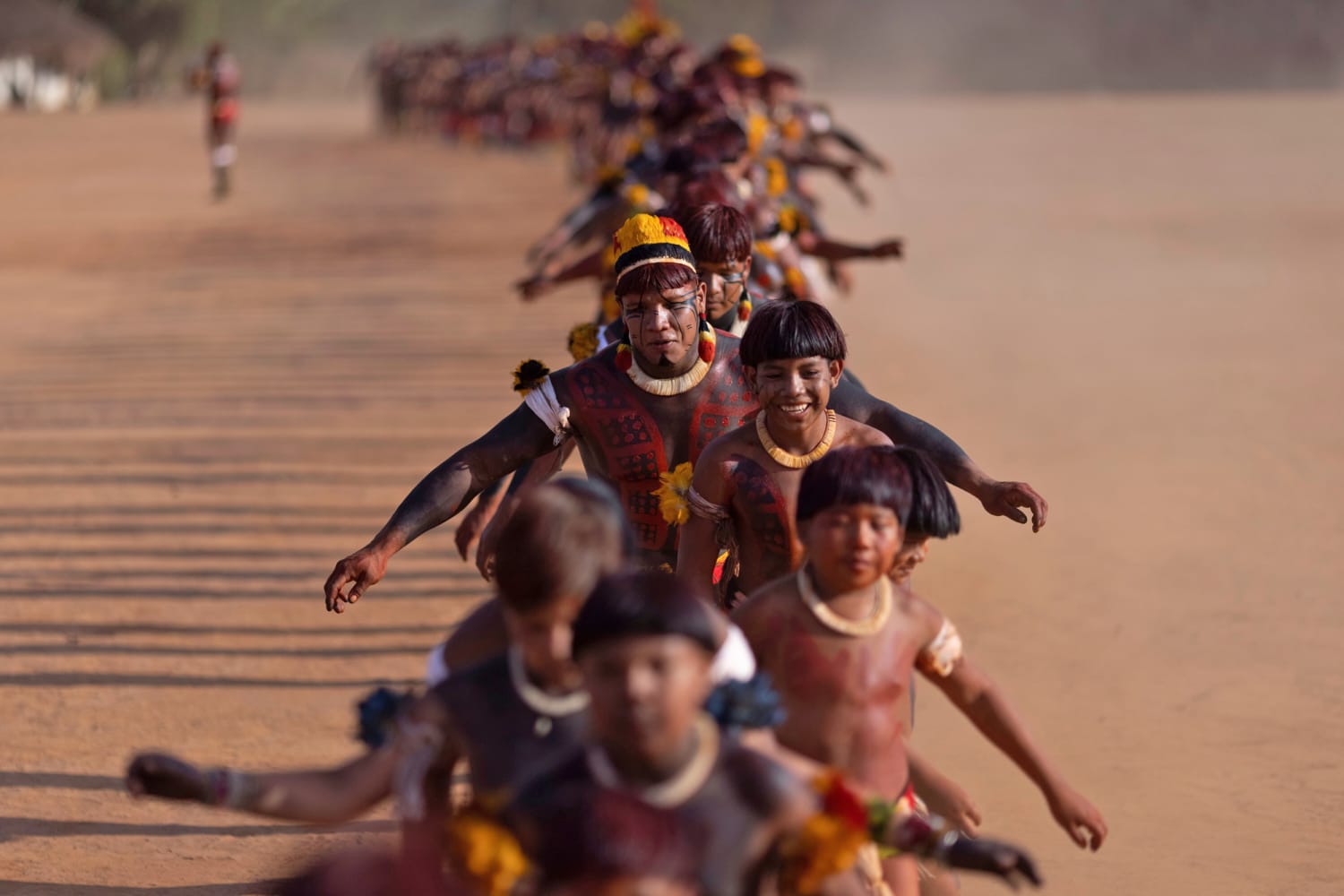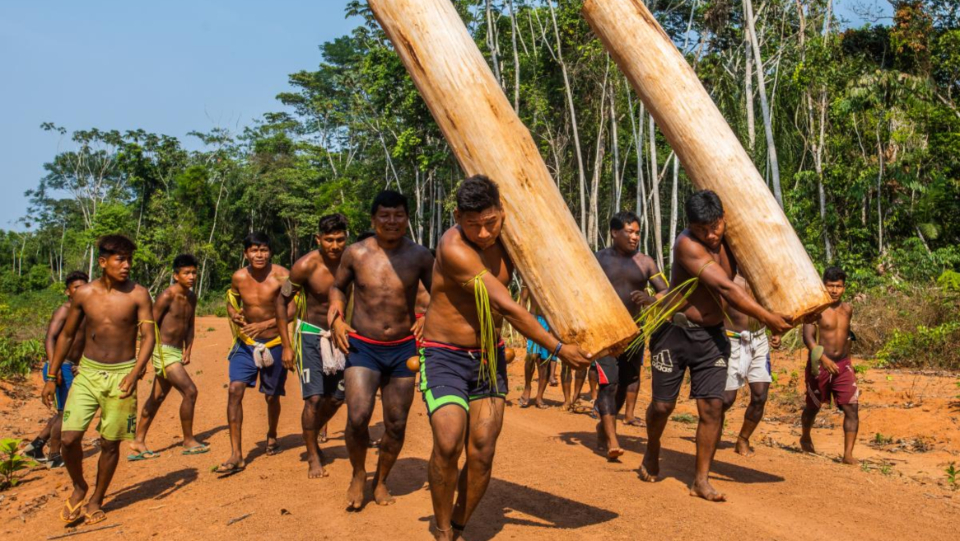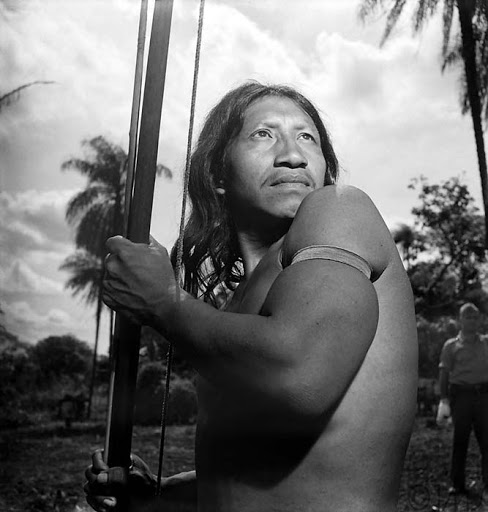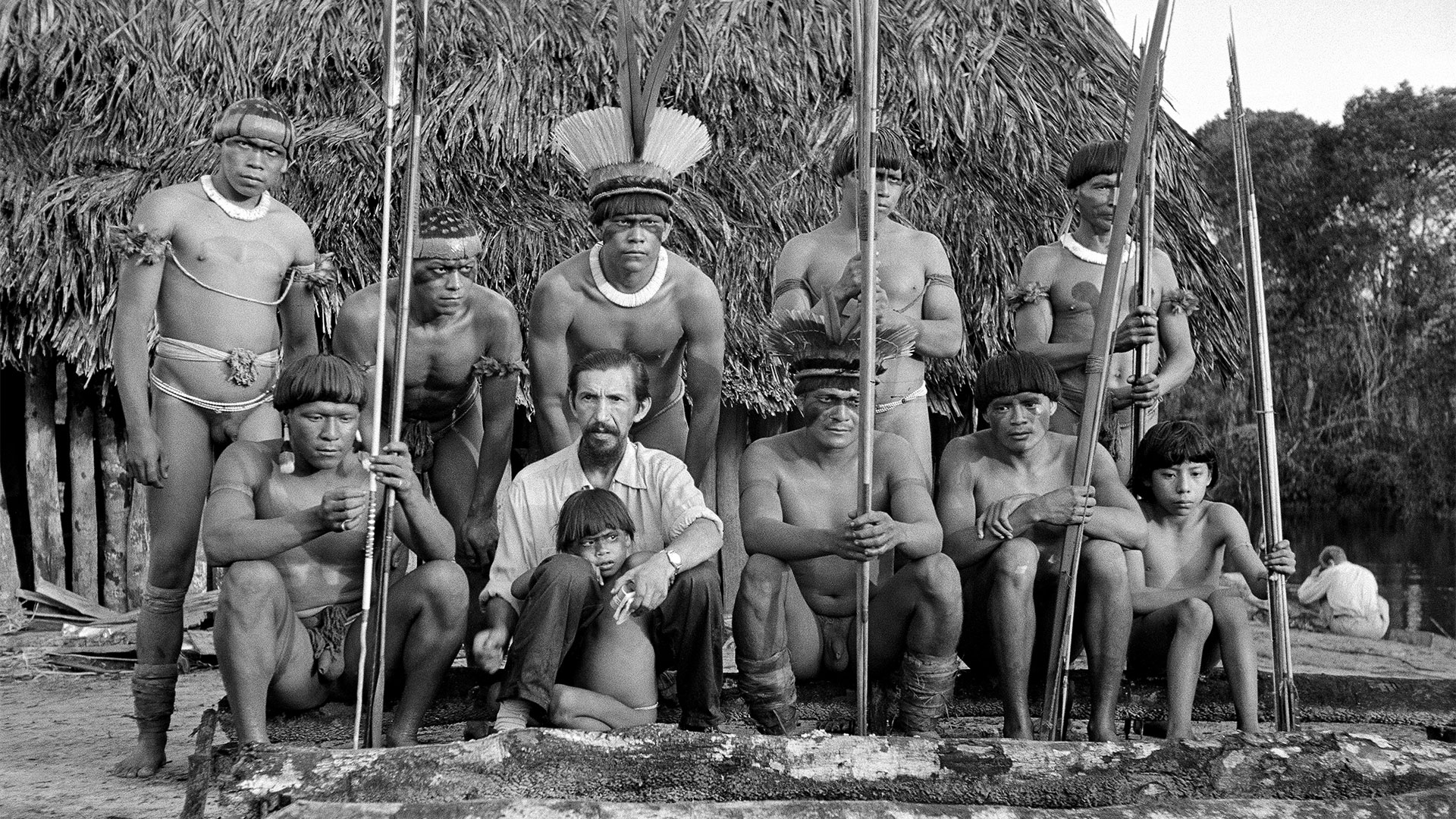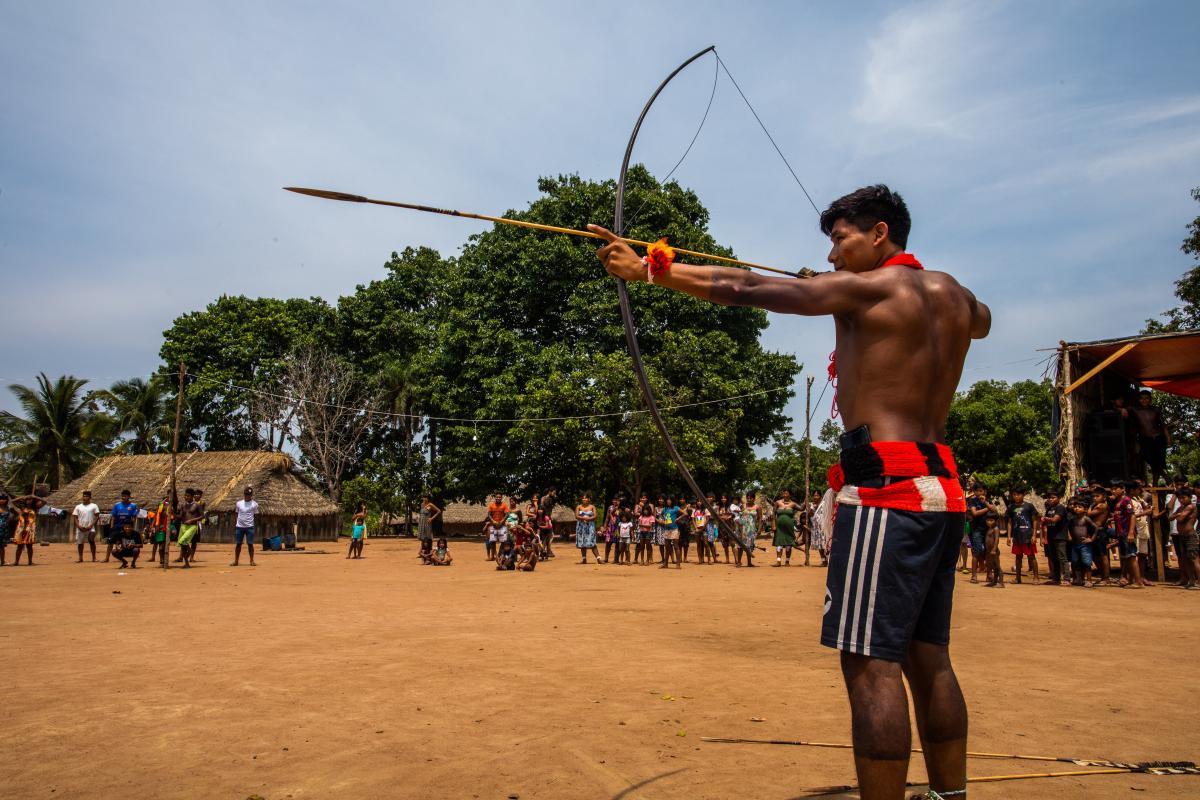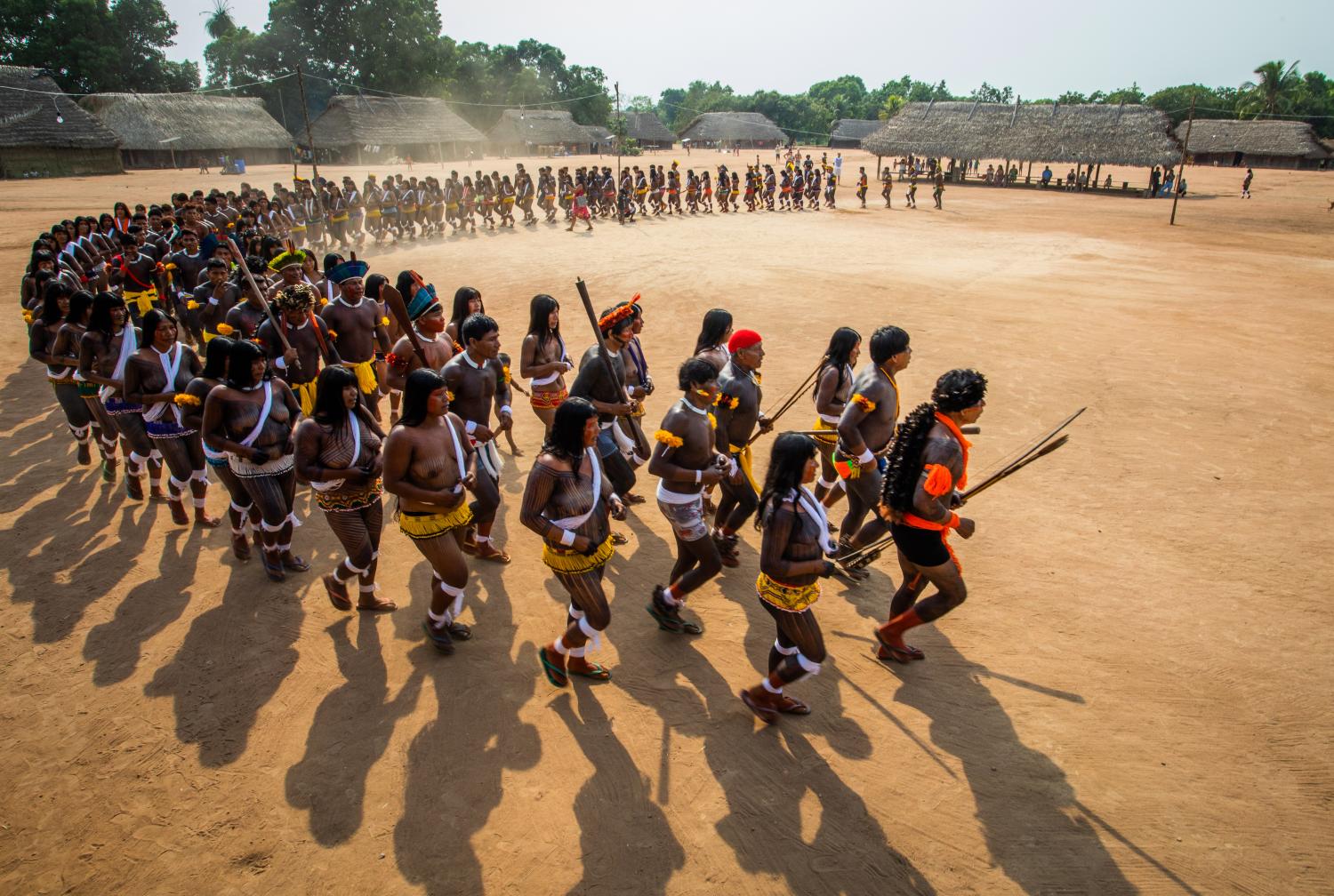Latin America
Related: About this forumPanaras, 'Giant Indians', Grow Again 50 Years after Contact
Reinstalled in their original land from 25 years ago, the group sees its population increase, but suffers pressure from invaders
Apr.24.2023 12:22PM
When they returned to their region of origin, in the Peixoto de Azevedo river basin, 25 years ago, the Panarás put an end to a tragedy that had lasted another 25 years: even before they found the contact front led by the Villas-Bôas brothers, in February 1973, "everybody" was already dying, as the chief Akë (pronounced Akã) tells us.
In the beginning, they were called "krenhakarore", always associated with the description "giant Indians". The fame of their supposedly beyond-average height, faded a little after contact, traveled the world between the late 1960s and early 1970s, provoking a global interest like few things in Brazil, apart from football, could reach at that time.

Panarás, 'giant Indians', grow again after almost disappearing. Credit: Fred Mauro
The Panará indigenous people managed to return to their homeland after decades of forced exile. Today they have reached a larger population than the one they had before being almost decimated by the diseases and mistreatment resulting from the contact determined by the military dictatorship, to tear up a road in the territory they occupied in the early 1970s.
Exactly 50 years after the meeting with Brazilian State officials, they are now going through a happy phase, of food comfort and population growth.
Even so, they are scared and have to permanently protect themselves against the risk of invasions, arson and the influence of agribusiness on their territory —in the form of a drying environment, water pollution and contamination of animals by pesticides.
https://www1.folha.uol.com.br/internacional/en/scienceandhealth/2023/04/panaras-giant-indians-grow-again-50-years-after-contact.shtml
~ ~ ~
Quick history source:
Despite the trauma of contact with Brazilian society in 1973, the white men’s diseases that almost decimated them, and twenty years of forced dislocation from their traditional lands of Peixoto de Azevedo River to the Parque Indígena do Xingu, the Panará have been able to recover their joy and desire to fight. They are once again growing in numbers and proud of their way of life. They were also able to take back part of their ancient traditional territory along the Iriri River (495,000 hectares of dense forest and headwaters, unspoiled by the white man) located on the border of Mato Grosso and Pará states. Nowadays, they want to be known by their real name: Panará.
[Extracted from Panará: a volta dos índios gigantes, book by Ricardo Arnt, Lúcio Flávio Pinto, Raimundo Pinto and Pedro Martinelli. São Paulo: ISA, 1998]
Who are the Panará?
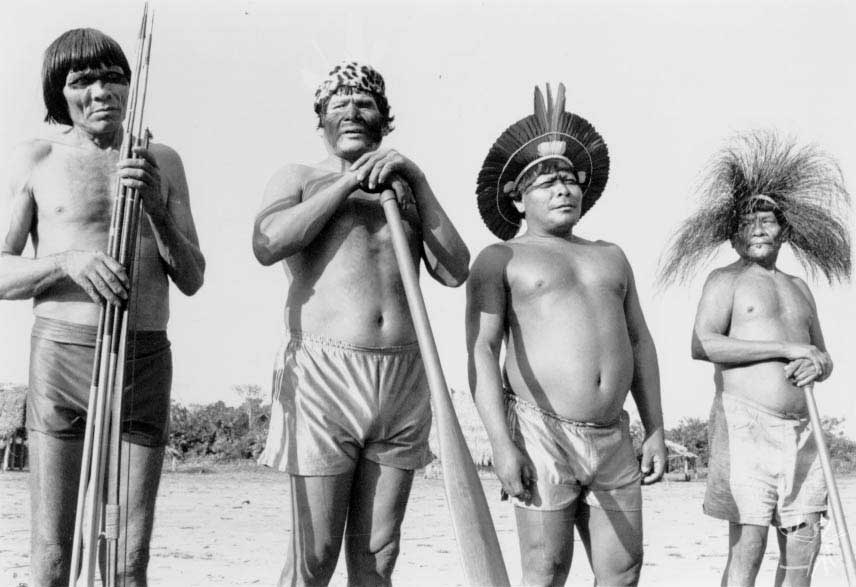
The Panará are the last descendants of the Southern Cayapó, a large group that dwelled over a vast area in central Brazil in the 18th century. Their territory stretched from the northern part of São Paulo state, Triângulo Mineiro and the southern portion of Goiás state to eastern part of Mato Grosso state and eastern and southeastern Mato Grosso do Sul state. The Southern Cayapó were known for their “ferocity” because they took no prisoners in battle.
The intensification of mineral exploration during the 18th century increased the trade flows between the states of São Paulo and Goiás, right in the middle of their land. Realizing the potential problems this would cause, the administrations of both provinces hired frontiersmen to drive the Indians away from the travelers’ and miners’ routes. Likewise, when Bartolomeu Bueno da Silva discovered gold in the Vermelho river region in Goiás in 1772, the Southern Cayapó began to encounter non-stop conflicts along this ever-expanding frontier.
The conflicts between the Southern Cayapó and the Portuguese settlers in the Goiás region were numerous and bloody. In the first skirmishes, according to a chronicler of the time, one thousand Cayapó were captured during a three-month campaign. A different investigator calculates that another 8,000 were enslaved in these first wars. Following the second half of the 18th century, the bandeiras (early exploratory expeditions) that had organized raids against the Cayapó veered from their initial purpose of enslaving the Indians to killing all men who could take up arms. By the end, the war against the Cayapó consisted of slaughter and compulsory living under the white man’s rule.
In the 19th century the occupation of the lands southwest of Goiás compounded the conflicts with the Indians and drove the Cayapó population to near extinction, with only a few groups remaining in the Triângulo Mineiro. The Southern Cayapó were considered extinct by the first few decades of the 20th century. The Panará who did not submit to the white man’s rule and assimilation in the 18th and 19th centuries fled west and north, deep into the woods of northern Mato Grosso. What is known from ethno-history is that by the beginning of the 20th century, the present Panará came to the Peixoto de Azevedo watershed, a right-bank tributary to the Teles Pires River that is one of the feeders of the Tapajós River. The natural wealth of the region contributed towards their settling down in this location.
The Panará’s oral tradition has it that they came from the East, from a savanna region, inhabited by extremely wild and ferocious white men who had fire weapons and who fought tirelessly to kill off many Panará ancestors. According to chieftain Akè Panará, "The elders told us that, long ago, the whites killed many Panará with their rifles. They came to our villages and killed many. ‘If they ever come here,’ they said, ‘kill them dead with your war clubs, for they are vicious.’"
More:
https://tinyurl.com/4x9v7bau
